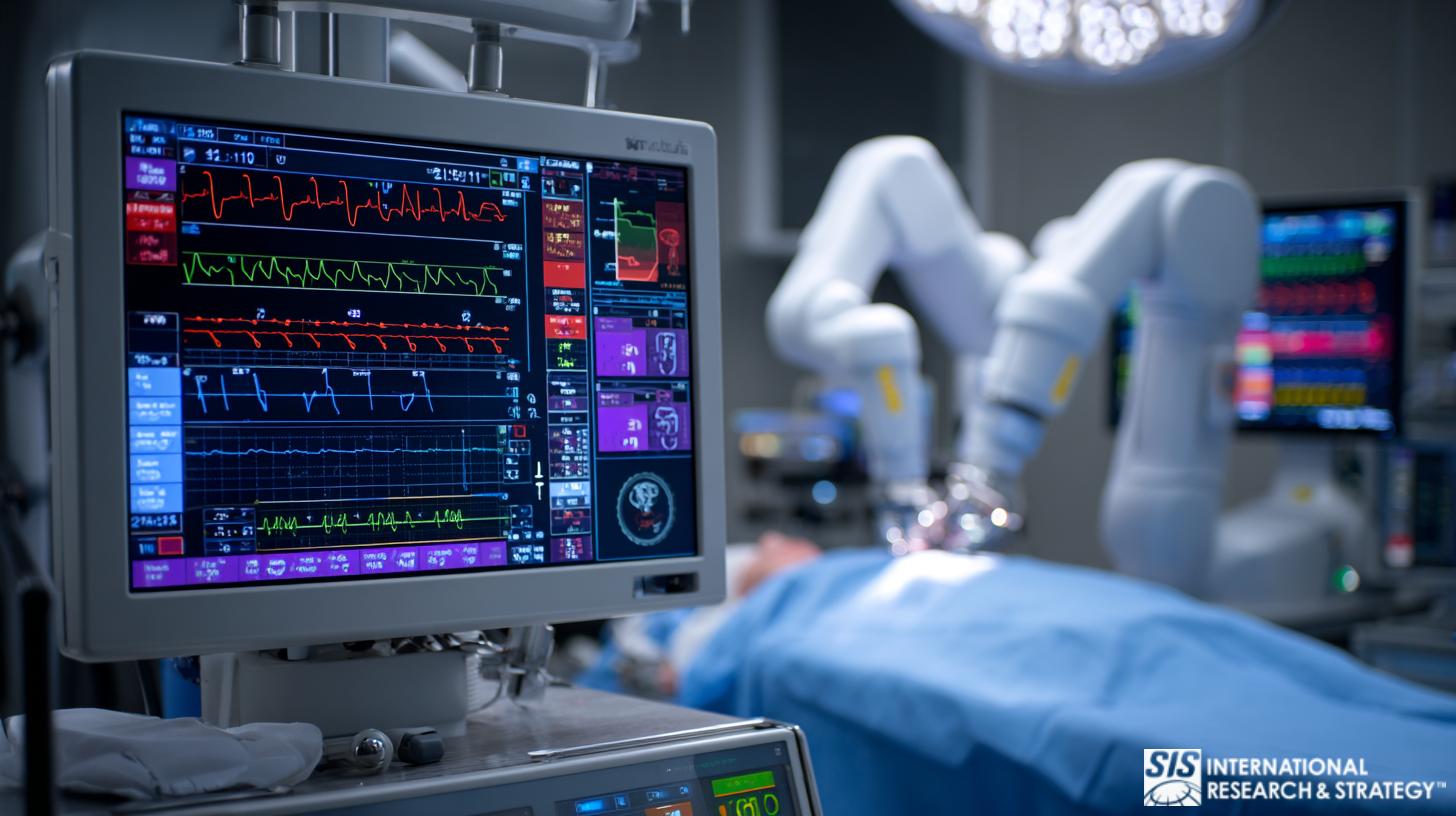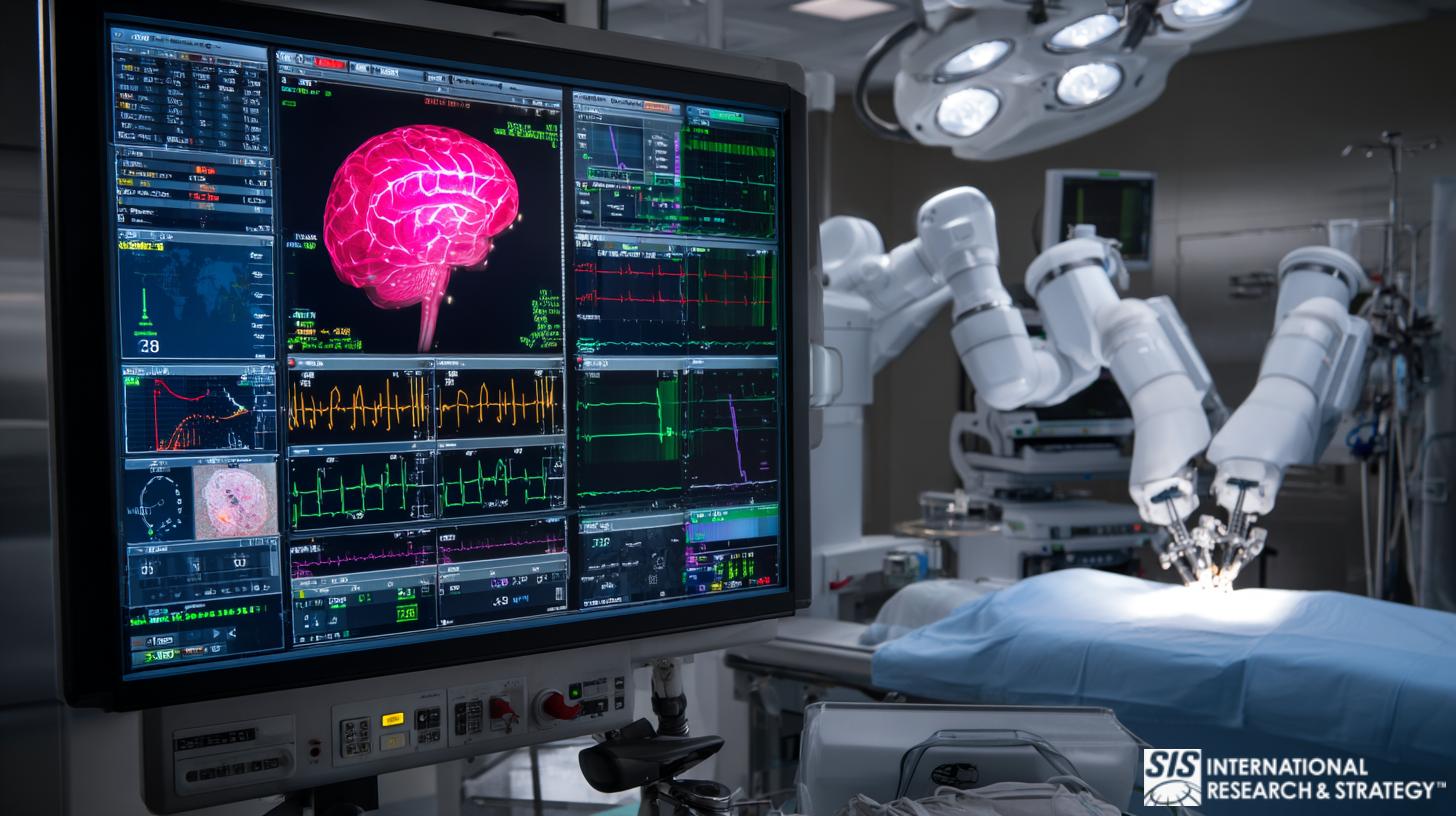Surgical Robot Market Research

The field of robotics has seen tremendous advancements in recent years, bringing innovation to multiple industries and increasing productivity. Particularly, robotics has made a significant impact in healthcare through the development and implementation of surgical robots.
For this reason, surgical robot market research plays a crucial role in understanding the current trends, emerging technologies, and future potential of this rapidly evolving industry – and a comprehensive analysis of the surgical robot market becomes essential for businesses to make informed decisions and stay ahead of the competition.
The importance of surgical robot market research in the current business landscape
As the healthcare industry continues to evolve, the demand for more advanced and efficient surgical solutions has grown, paving the way for the rapid development and adoption of surgical robots. That’s why surgical robot market research is relevant for several stakeholders such as manufacturers, healthcare providers, investors, and policymakers; to understand and capitalize on the opportunities surgical robots present.
Surgical robot market research is especially important to compete in a market led by companies such as Intuitive Surgical, Stryker Corporation, Medtronic, Smith & Nephew, and Zimmer Biomet. These companies have a strong market presence, extensive product portfolios, and significant investments in research and development.
In any case, some key reasons why surgical robot market research is growing so fast are the following:
- Identifying market trends: Obtaining in-depth insights about the latest trends and technological advancements in the surgical robot industry is essential for businesses to maintain a competitive edge. Surgical robot market research aims at identifying these trends, enabling companies to develop innovative products and solutions that meet the evolving needs of healthcare providers.
- Understanding market dynamics: The surgical robot industry is controlled by factors such as government regulations and the prevalence of chronic diseases – and surgical robot market research provides valuable insights into these factors, assisting global businesses to take well-informed decisions.
- Assessing market potential: Surgical robot market research helps companies obtain a picture of the market size, growth potential, and future demand for robotic surgical solutions. This data is critical for businesses looking to expand their market presence and invest in this industry.
- Competitive analysis: It helps businesses to understand their competitors’ strengths and weaknesses with an in-depth analysis of the key players in the market, their product offerings, and their market strategies.
- Identifying growth opportunities: Surgical robot market research helps businesses identify untapped markets, niche segments, and emerging applications that can offer significant growth opportunities.
Surgical robot market research: Trends and drivers

- Continuous innovations in robotic technologies are driving the surgical robot market. Developments such as 3D visualization, artificial intelligence (AI), and machine learning (ML) are revolutionizing surgical procedures by providing real-time guidance and decision-making support.
- There is a growing preference for minimally invasive surgeries, and surgical robots are well-suited for these tasks. They offer increased precision and control, making them an attractive option for surgeons performing complex procedures.
- The increasing prevalence of chronic diseases such as cancer and obesity has led to a growing demand for surgical interventions. Surgical robot market research could be an alternative for efficient and precise surgical solutions.
- Governments and private healthcare providers are investing in advanced healthcare infrastructure to improve the quality of patient care – and surgical robot market research helps at driving the adoption of cutting-edge technologies.
- Companies in the surgical robot market are increasingly engaging in partnerships and collaborations to leverage each other’s expertise, resources, and market presence. These collaborations often focus on the development of new technologies, the expansion of product offerings, or the entry into new markets.
Market challenges
- High costs of surgical robots: The initial investment required for purchasing a surgical robot system is costly for many healthcare facilities, particularly in emerging economies.
- Limited awareness in emerging markets: Despite the growing demand for advanced surgical solutions, there is still limited awareness and adoption of surgical robots in many emerging markets.
- Regulatory concerns: The surgical robot market is subject to stringent regulatory requirements and scrutiny, as patient safety and surgical outcomes are of paramount importance. The approval process for new robotic systems and technologies can be lengthy and complex, potentially delaying market entry and impacting the overall growth of the industry.
- Cybersecurity concerns: As surgical robots become increasingly connected and integrated into healthcare systems, concerns related to cybersecurity and data privacy arise.
Opportunities in surgical robot market research

The surgical robot market is expected to have significant growth, driven by technological advancements, increasing demand for minimally invasive surgeries, and a growing aging population. Therefore, surgical robot market research will play a vital role in the following areas:
- Expansion in emerging markets: The surgical robot market is expected to experience considerable growth in emerging markets such as Asia-Pacific, Latin America, and Africa since healthcare infrastructure in these regions continues to improve. Companies can capitalize on this opportunity by expanding their presence in these markets and tailoring their offerings to meet local needs.
- Further integration of AI and ML: The incorporation of AI and ML into surgical robot systems has the potential to revolutionize the industry. These technologies can enhance surgical robots’ capabilities by providing real-time guidance, predictive analytics, and decision-making support, improving surgical outcomes and patient care.
- Development of cost-effective surgical robots: The high costs associated with surgical robots are a barrier to their widespread adoption. Companies that can develop more affordable and cost-effective robotic systems while maintaining quality and performance will be well-positioned to capture a larger share of the market and drive increased adoption.
- Advancements in remote surgery: With the increasing adoption of telemedicine and the rising need for remote surgical solutions, there is significant potential for growth in the development of surgical robots capable of performing remote procedures.
- Exploration of new applications: As surgical robot technologies continue to advance, new applications and medical specialties may benefit from the adoption of robotic solutions. Companies can explore these emerging areas, identify unmet needs, and develop specialized surgical robots to cater to specific procedures or patient populations, thus expanding their market reach and product offerings.
SIS International offers Quantitative, Qualitative, and Strategy Research. We provide data, tools, strategies, reports and insights for decision-making. We conduct interviews, surveys, focus groups and many other Market Research methods and approaches. Contact us for your next Market Research project.

